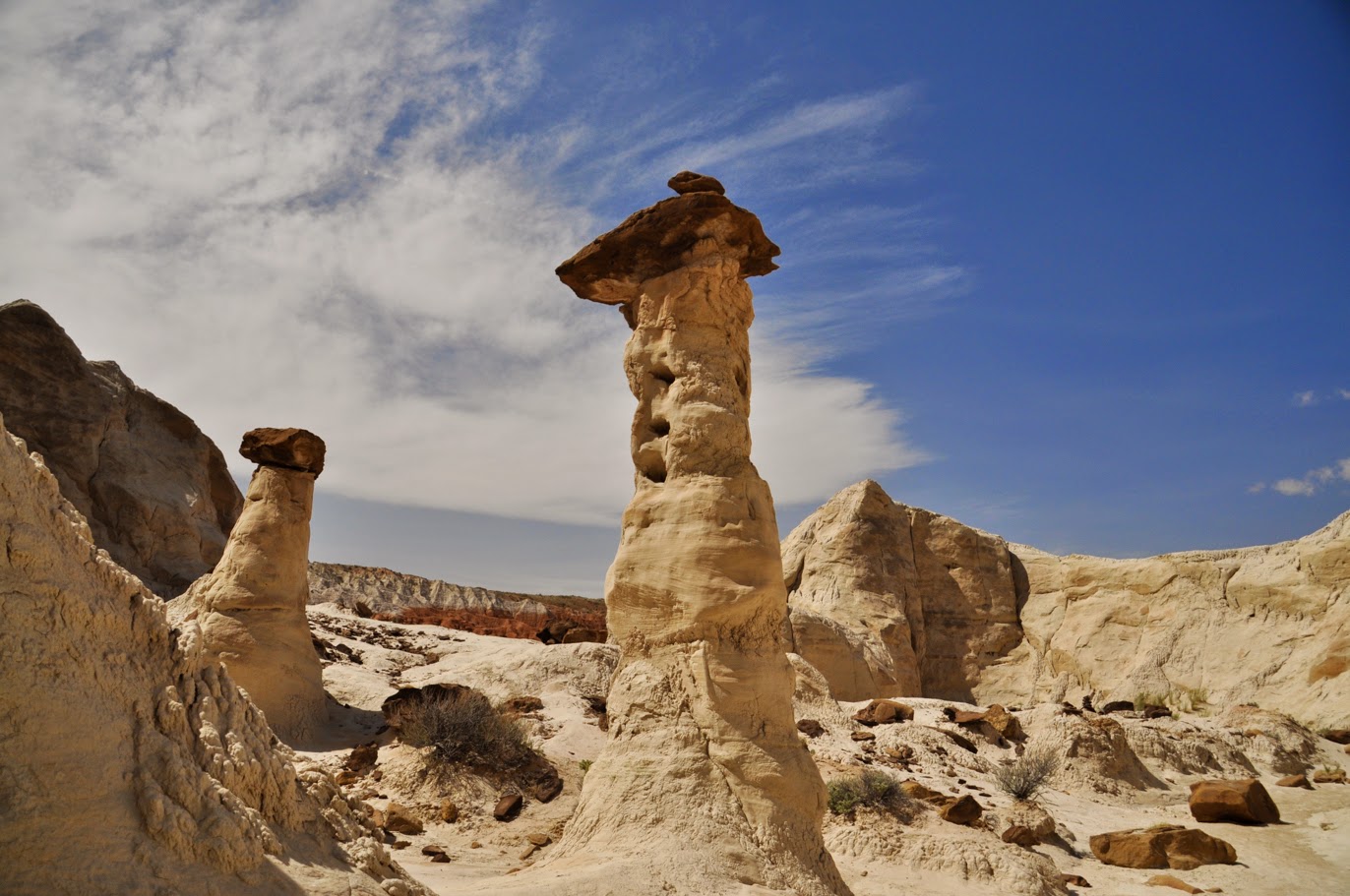The trailhead is right on the highway. When we arrived, we were the only ones there. We followed the trail though the was up to the first toadstool.
The trail up to the first toadstool was plainly obvious, but then it split into lots of social trails. It appeared to us that it continued in the wash, so we followed that until it was apparent that we needed to backtrack. Once back at the first toadstool, we quickly found the right trail.
The path took us up to a broad red sandstone bench with toadstools and huge white cliffs.
Around the next corner, we found this overlook, which just begged for a bootshot.Back in an alcove, we found a bunch of white toadstools. This one was probably ten feet tall. The resistant caprock keeps the column, made of softer rock, from eroding away. More about how hoodoos and toadstools are formed can be found here.
Looking back towards the first set of toadstools.
Another red toadstool.
Calochortus nuttallii (Sego Lily). This is the Utah state flower. As with the other hikes we'd done, the flowers were fantastic.
Oenothera caespitosa (Dwarf Evening Primrose)
Wildflowers near the toadstools.
On our way back to St. George, we stopped along the road to the Paria townsite. We didn't make it all the way down there, but we made it far enough to see some amazing views.Then, after three days of quiet, uncrowded trails, we headed to Zion National Park. You can certainly escape the crowds in Zion by hiking a few miles into the backcountry, but there is no escaping them on the road. This is in the east part of the park. In spite of the crowds, the scenery is spectacular and worth it. On this afternoon, we were just passing through.
Our first look at the Zion Canyon.













No comments:
Post a Comment